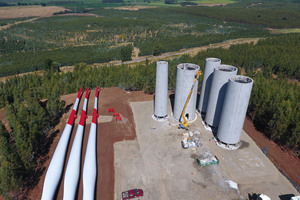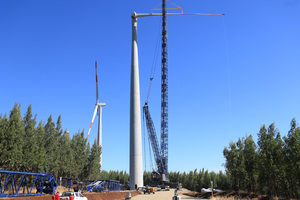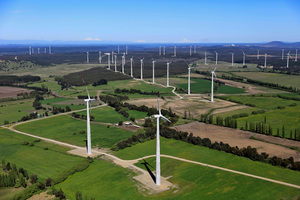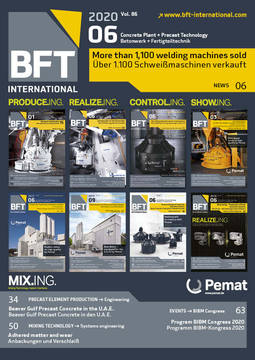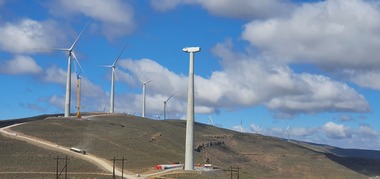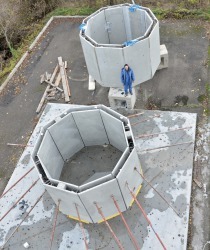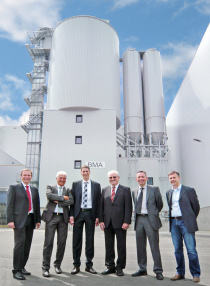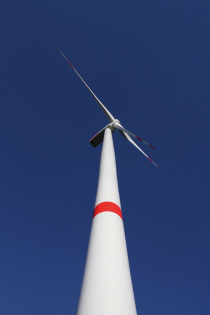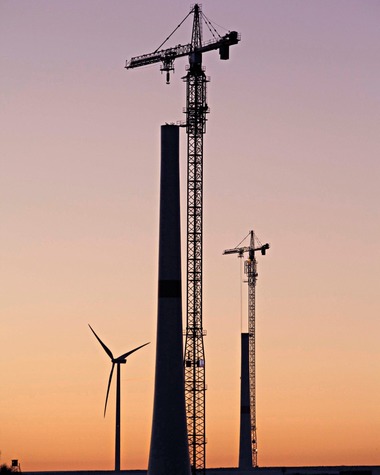San Gabriel wind farm in Chile a cutting-edge work
Located in the Araucanía Region, the new wind farm in charge of the Company Acciona is made up of 61 wind turbines that were mounted on precast reinforced concrete towers. In other words, a construction method unprecedented in the country.
The installed capacity of the new wind power plant is 183 MW, which will be injected directly into the National Electric System (SEN).
According to information from Acciona, this wind farm will produce clean energy for more than 250,000 homes and will annually avoid the emission of 486,000 tons of CO2 into the atmosphere.
Taking into account the seismicity level of the country and of this area as well, the metal structure solutions available on the market on which to install the wind turbines had some restrictions, in addition to not having the proper certification according to the seismic regulations of Chile.
However, thanks also to the great experience of the Chilean engineers specialized in earthquake-resistant constructions, the solution to carry out this important project was to carry out the structure of the reinforced concrete towers, which in addition to being economically competitive had this certification.
Heights of up to 140 m
Nordex Group, the company that built the wind turbines, had to review the structural calculation of the towers and adapt it to comply with the country‘s seismic regulations. The result of the new design required that the precast segments be made with self-compacting concrete of 55 MPa of compressive strength respecting the Chilean seismic regulations.
One of the advantages offered by this type of precast that can be manufactured on site significantly reduces transport costs, which, due to its topography, would have involved rather complicated logistics in this area. Another advantage is that production can be carried out with local raw materials, creating jobs for people who live in the places close to the construction site and, finally, concrete offers greater price stability compared to steel. The creation of local employment begins with the project for the implementation of the precast factory that is carried out 6 months before the start of manufacturing.
In other projects that were carried out in the country, the metal towers arrived by sea at the ports and, later, transported to the location area of the work, which means a rather expensive cost for being an oversized load.On the other hand, a concrete tower with precast segments has no transport limitations and can also be designed with larger diameters than a steel tower, to reach heights of up to 140m at a very competitive cost.
Each tower is made up of 22 precast parts being 20 m long with an approximate weight of 50 t per voussoir. According to data provided by Nordex, 400 m3 of concrete were used to manufacture each tower. The manufacturing process begins with the elaboration of the armor. For this, all the positions of previously cut and bent steel are placed in a template in such a way that the reinforcement is made up in the shape of the precast parts that will be transferred to the mold by means of the gantry cranes.
Once the reinforcement is in the mold, it is closed and concrete is supplied from the plant that is inside the factory itself, thus carrying out the concreting process in the mold. After about 8 h of curing, the mold is removed and the element is ready to be transferred to the collection area by means of the gantry cranes.
Weight between 100 and 250mt
The factory has numerous facilities such as its own concrete plant, waste management areas, necessary warehouses for materials and a storage area for the finished product.
Once the segments were manufactured, they were assembled to follow the assembly on site using lattice boom cranes and telescopic cranes, to proceed with the installation of components such as electric cables, ladders, supports, lights and then be transported to the place where wind turbines were installed.
Once the different precast parts arrived at the site, the precast parts that make up the six sections or sections that shaped the towers of the San Gabriel Wind Farm proceeded. According to the type of segments, the weight of each of these sections varies between 250 tons, the heaviest, and 100 t.
The joining of segments was carried out using the aforementioned cranes, in order to place prior to the treatment and sealing of vertical joints. And once the assembly of each section was completed, the vertical assembly of the same was carried out, giving final shape to the tower.

